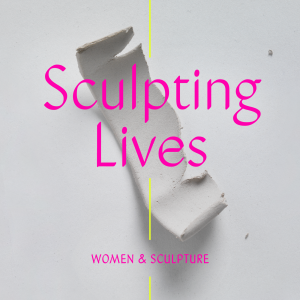
'She did cause a bit of a revolution in the Royal Academy, which has been only to the good,' Anne Desmet, R.A.
Gertrude Hermes was one of the most experimental sculptors of the twentieth century. She also changed the way women artists were treated at the Royal Academy forever – a story which had been overlooked until recently. Representing Britain at the Paris World Fair of 1937, selected for the British Pavilion at the 1939 Venice Biennale and the subject of a solo retrospective at the Whitechapel Gallery in 1967, Hermes’ reputation fell into obscurity and her reforming activism forgotten.
Gertrude Hermes was one of the most experimental sculptors of the twentieth century. She also changed the way women artists were treated at the Royal Academy forever – a story which had been overlooked until recently. Representing Britain at the Paris World Fair of 1937, selected for the British Pavilion at the 1939 Venice Biennale and the subject of a solo retrospective at the Whitechapel Gallery in 1967, Hermes’ reputation fell into obscurity and her reforming activism forgotten.
In the 1920s she was part of a group of artists including Henry Moore, Barbara Hepworth and Eileen Agar who were invigorating traditional techniques with a modernist approach. Working not only across sculpture and printmaking, but a variety of decorative and architectural forms such as door knockers and fountains, Hermes imbued her work with a vital energy that often focused on the elemental forces of nature.
This episode takes listeners to where she lived and worked along the Thames tracing her friendships and patrons, her art school networks and studios; and the work that remains around us. We speak to people who knew Hermes, worked with her, as well as contemporary artists who explain the allure of an artist they describe as a 'goddess'.
Image: Gertrude Hermes carving Diver at St Peter’s Square, 1937. Digital image courtesy of Leeds Museums and Galleries © Archive of Sculptors Papers, Leeds Museums _ Galleries Bridgeman Images,
Image: Gertrude Hermes carving Diver at St Peter’s Square, 1937. Digital image courtesy of Leeds Museums and Galleries © Archive of Sculptors Papers, Leeds Museums _ Galleries Bridgeman Images,
More Episodes
S2 Ep5: Sculpting Lives: Cathie Pilkington
 2021-11-30
2021-11-30
 2021-11-30
2021-11-30
S2 Ep4: Sculpting Lives: Alison Wilding
 2021-11-23
2021-11-23
 2021-11-23
2021-11-23
S2 Ep2: Sculpting Lives: Veronica Ryan
 2021-11-09
2021-11-09
 2021-11-09
2021-11-09
S2 Ep1: Sculpting Lives: Dora Gordine
 2021-11-02
2021-11-02
 2021-11-02
2021-11-02
S2: Sculpting Lives Season Two Trailer
 2021-10-25
2021-10-25
 2021-10-25
2021-10-25
S1 Ep5: Sculpting Lives: Rana Begum
 2020-04-21
2020-04-21
 2020-04-21
2020-04-21
S1 Ep4: Sculpting Lives: Phyllida Barlow
 2020-04-14
2020-04-14
 2020-04-14
2020-04-14
S1 Ep3: Sculpting Lives: Kim Lim
 2020-04-07
2020-04-07
 2020-04-07
2020-04-07
S1 Ep2: Sculpting Lives: Elisabeth Frink
 2020-03-31
2020-03-31
 2020-03-31
2020-03-31
S1 Ep1: Sculpting Lives: Barbara Hepworth
 2020-03-24
2020-03-24
 2020-03-24
2020-03-24
S1 Ep1: Sculpting Lives: Trailer
 2020-03-16
2020-03-16
 2020-03-16
2020-03-16
012456789101112
Create your
podcast in
minutes
- Full-featured podcast site
- Unlimited storage and bandwidth
- Comprehensive podcast stats
- Distribute to Apple Podcasts, Spotify, and more
- Make money with your podcast
It is Free
- Privacy Policy
- Cookie Policy
- Terms of Use
- Consent Preferences
- Copyright © 2015-2024 Podbean.com






